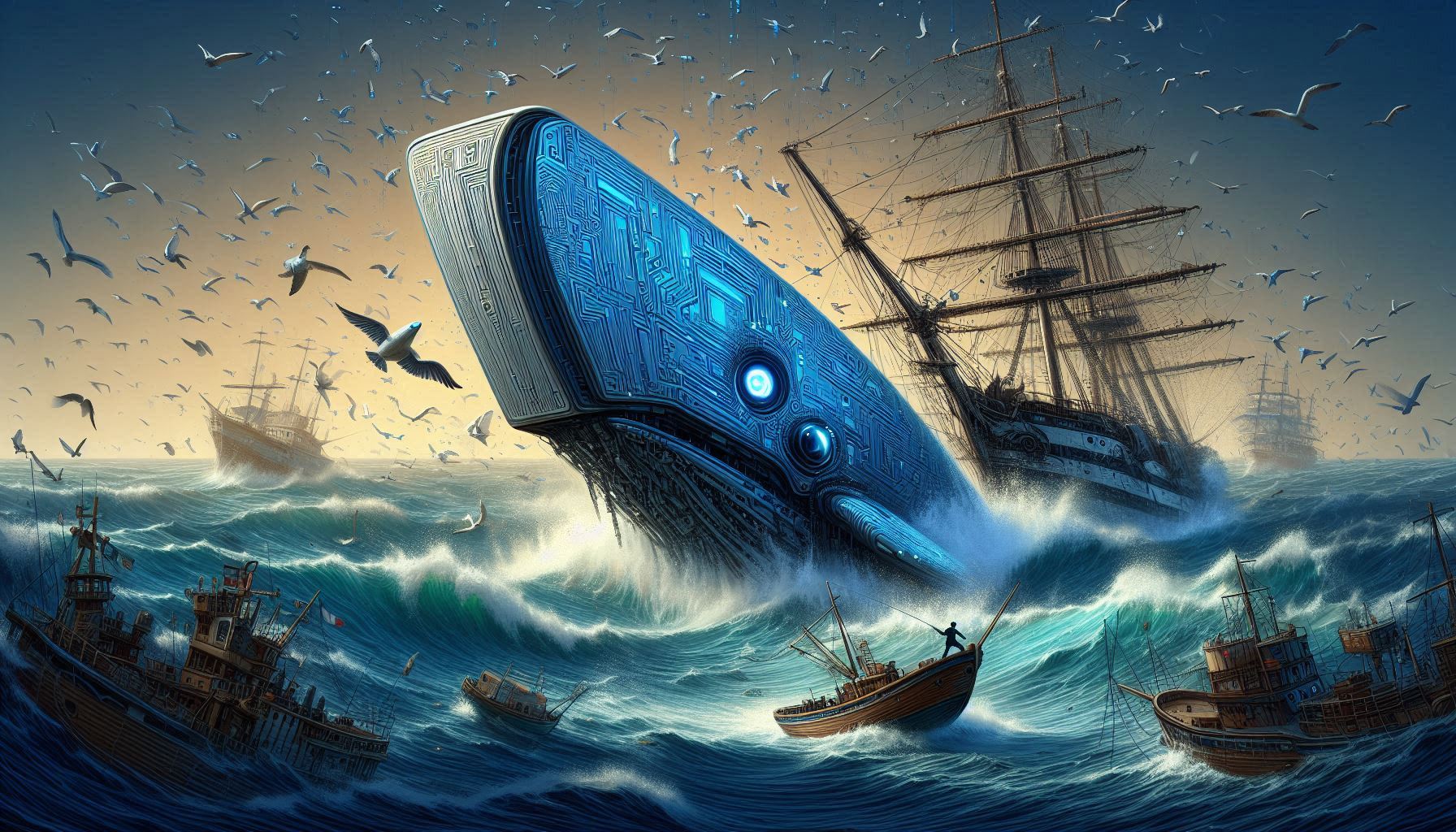“Give them bread and circuses, and they will never revolt.”
— Juvenal, Roman satirist
Over the past two weeks, my LinkedIn feed has looked like an AI fever dream. Every meme from the past 10 years was turned into a Studio Ghibli production. Former colleagues changed their profile pictures into a Muppet version of themselves. And somewhere, a perfectly respectable CTO shared an image of themselves as an ’80s action figure.
Meanwhile, in boardrooms everywhere, a familiar silence falls: ‘But… where’s the ROI?‘
The Modern Colosseum
The Roman Empire understood something timeless about human nature: if people are distracted, they’re less likely to notice what’s happening around them. Bread and circuses. Keep them fed and entertained, and you can buy yourself time (or at least avoid a riot).
Fast-forward a couple of thousand years, swap out the emperors and politicians for CEOs in hoodies, VCs in Patagonia vests, and gladiators for generative AI, and the strategy hasn’t changed much.
Today’s Colosseum is our social feed. And instead of lions and swords, it’s Ghibli filters, Muppet profile pictures, and action figure avatars. Every few weeks, a new AI-powered spectacle sweeps through like a new headline act. The crowd goes wild. The algorithm delivers the dopamine. And for a moment, it feels like this is what AI was always only meant for fun, viral, harmless play.
But here’s the thing: that spectacle serves a purpose. The companies building these tools want you in the arena.
Every playful experiment trains their models, every viral trend props up their metrics, and every wave of AI-generated content helps justify the next round of fundraising at an even higher valuation. These modern-day emperors are profiting from the distraction.
You get a JPEG. They get data, engagement, and another step toward platform dominance.
Meanwhile, the harder, messier questions that actually matter get conveniently lost in the noise:
- Where does this data come from?
- Where does the data go?
- Who owns it?
- Who profits from it?
- What happens when a handful of companies control both the models and the means of production?
- And are these tools creating real business value — or just highly shareable distractions?
Because while everyone’s busy turning their profile picture into a dreamy Miyazaki protagonist, the real, boring, messy, complicated work of AI is quietly stalling out as companies continue to struggle to find sustainable, repeatable ways to extract value from these tools. The promise is enormous, but the reality? It’s a little less cinematic.
And so the cycle continues: hype on the outside, hard problems on the inside. Keep the crowd entertained long enough, and maybe nobody will ask the hardest question in the arena:
“Is any of this actually working?”
Spectacle Scales Faster Than Strategy
It’s easy to look at all of this and roll your eyes. The AI selfies. The endless gimmicks. The flood of LinkedIn posts that feel more like digital dress-up than technology strategy.
But this dynamic exists for a reason. In fact, it keeps happening because the forces behind it are perfectly aligned.
It’s Easy
The barrier to entry for generative AI spectacle is incredibly low.
Write a prompt. Upload a photo. Get a result in seconds. No infrastructure. No integration. No approvals. Just instant content, ready for likes.
Compare that to operationalizing AI inside a company where projects can stall for months over data access, privacy concerns, or alignment between teams. It’s no wonder which version of AI most people gravitate towards.
It’s Visible
Executives like to see signs of innovation. Shareholders like to hear about “AI initiatives.” Employees want to feel like their company isn’t falling behind.
Generative AI content delivers that visibility without the friction of actual transformation. Everyone gets to point to something and say, “Look! We’re doing AI.”
It’s Fun
Novelty wins attention. Play wins engagement. Spectacle spreads faster than strategy ever will.
People want to engage with these trends — not because they believe it will transform their business, but because it’s delightful, unexpected, and fundamentally human to want to see yourself as a cartoon.
It’s Safe
The real work of AI is messy. It challenges workflows. It exposes gaps in data. It forces questions about roles, skills, and even headcount.
That’s difficult, political, and sometimes threatening. Creating a Muppet version of your team is much easier than asking, “How do we automate this process without breaking everything?”
And that’s exactly what the model and tool providers are taking advantage of. The easier it is to generate content, the faster you train the models. The more fun it is to share, the more data you give away. The safer it feels, the less you question who controls the tools you’re using.
The Danger of Distraction
The Colosseum didn’t just keep the Roman crowds entertained — it kept them occupied. And that’s the real risk with today’s AI spectacle.
It’s not that the Ghibli portraits or action figure avatars are bad. It’s that they’re incredibly effective at giving the illusion of progress while the hard work of transformation stalls out behind the scenes.
Distraction doesn’t just waste time. It creates risk. It creates vulnerability.
Because while everyone is busy playing with the latest AI toy, the companies building these tools are playing a very different game — and they are deadly serious about it.
They’re not just entertaining users. They’re capturing data. Shaping behavior. Building platforms. Creating dependencies. And accelerating their lead.
Every viral trend lowers the bar for what people expect AI to do — clever content instead of meaningful change, spectacle instead of service, noise instead of impact. Meanwhile, the companies behind the curtain aren’t lowering their ambitions at all. They’re racing ahead.
And the longer you sit in the stands clapping, the harder it gets to catch up.
Leaders lose urgency. Teams lose focus. Customers lower their standards. And quietly, beneath all the fun and novelty, a very real gap is opening up — between the companies who are playing around with AI and the companies who are building their future on it.
This is the real risk: not that generative AI fails but that it succeeds at the completely wrong thing. That we emerge from this wave with smarter toys, funnier memes, faster content… but no real shift in how work gets done, how customers are served, or how value is created.
And by the time the novelty wears off and people finally look around and ask, “Wait, what did we actually build?” it might be too late to catch up to the companies who never stopped asking that question in the first place.
Distraction delays that reckoning. But it doesn’t prevent it.
The crowd will eventually leave the Colosseum. The show always ends. What’s left is whatever you bothered to build while the noise was loudest.
Leaving The Arena
If the past year has felt like sitting in the front row of the AI Colosseum, the obvious question is: do you want to stay in your seat forever?
Because leaving the arena doesn’t mean abandoning generative AI. It means stepping away from the noise long enough to remember why you showed up in the first place. It means holding both yourself and the technology providers to a higher standard.
It means asking harder questions about how you’re using AI and who you’re trusting to shape your future.
- What real problems could this technology help us solve?
- Where are we spending time or money inefficiently?
- Who owns the value we create with these tools?
- Where are we giving away data, control, or customer relationships without realizing it?
- What assumptions are these LLM providers baking into our products, our workflows, our culture?
- What happens to our business if these providers change the rules, the pricing, or the access tomorrow?
- Are we designing for leverage or locking ourselves into dependency?
- What happens if these companies own both the means of production and the means of distribution?
It means shifting the focus from what AI can do to what people need. From delight to durability. From spectacle to service. From passive adoption to active accountability.
Because the real work isn’t viral. It doesn’t trend on social media. No one’s sharing screenshots of cleaner data pipelines or more intelligent internal tools. But that’s exactly where the lasting value gets created.
The companies (and people) who figure that out will not only survive the hype cycle but also be the ones standing long after the crowd moves on to whatever comes next.
The arena will always be there. The show will always go on. The next shiny demo will always drop.
But at some point, you must decide whether you’re in this to watch or are here to build something that lasts and ask the uncomfortable questions that building requires.

